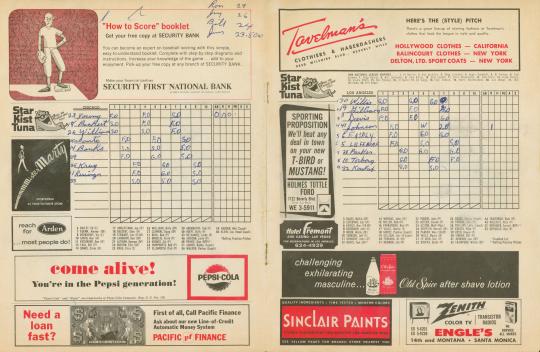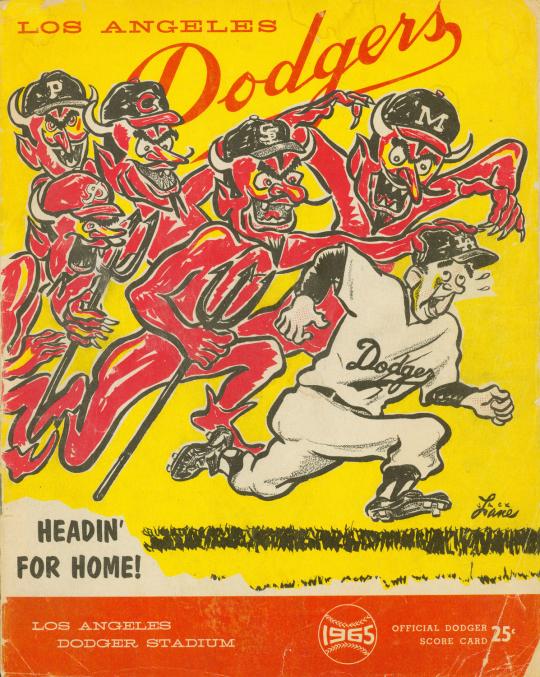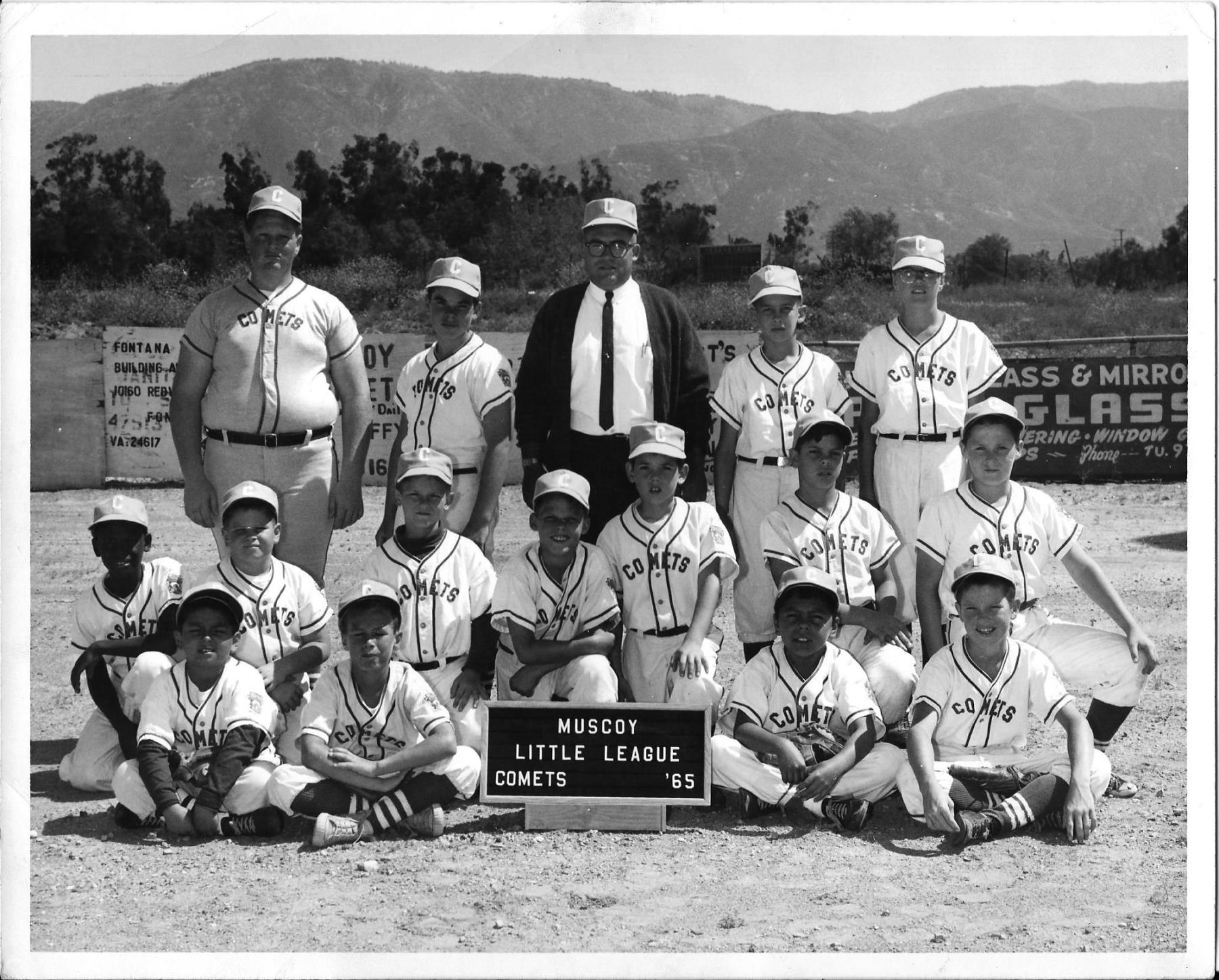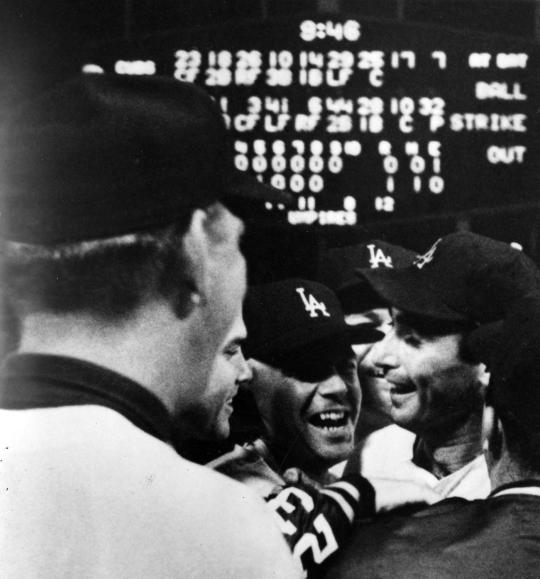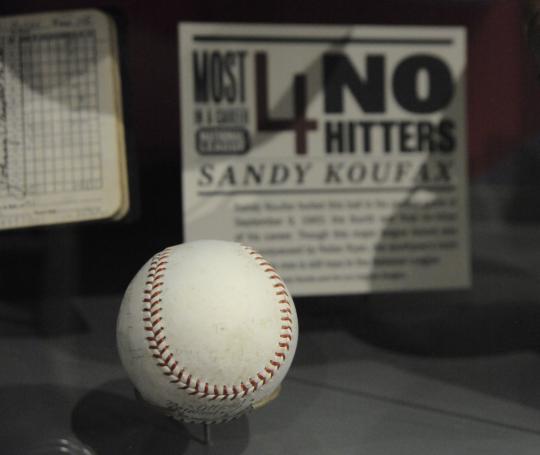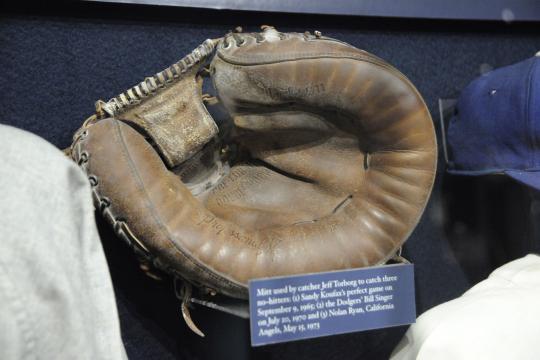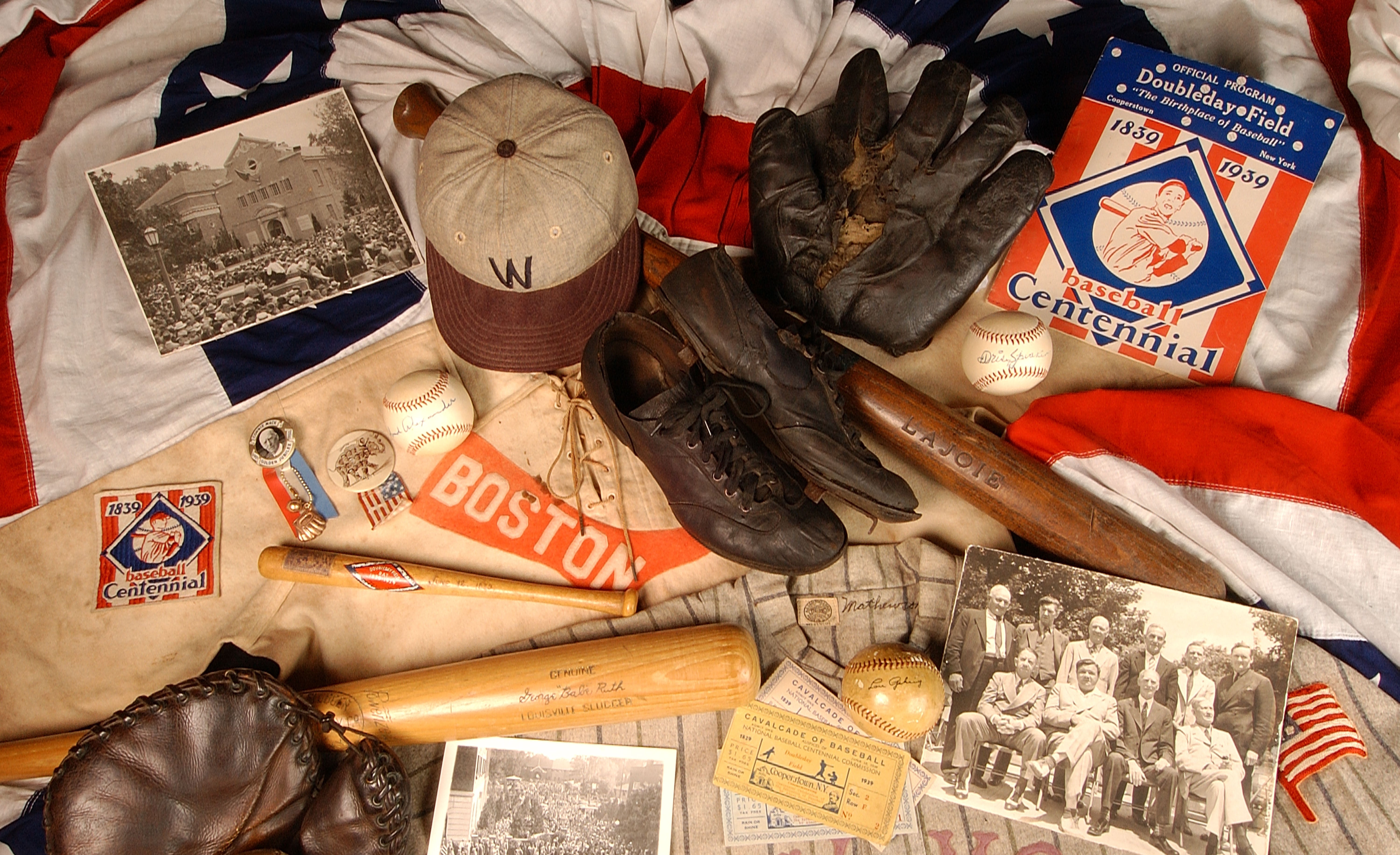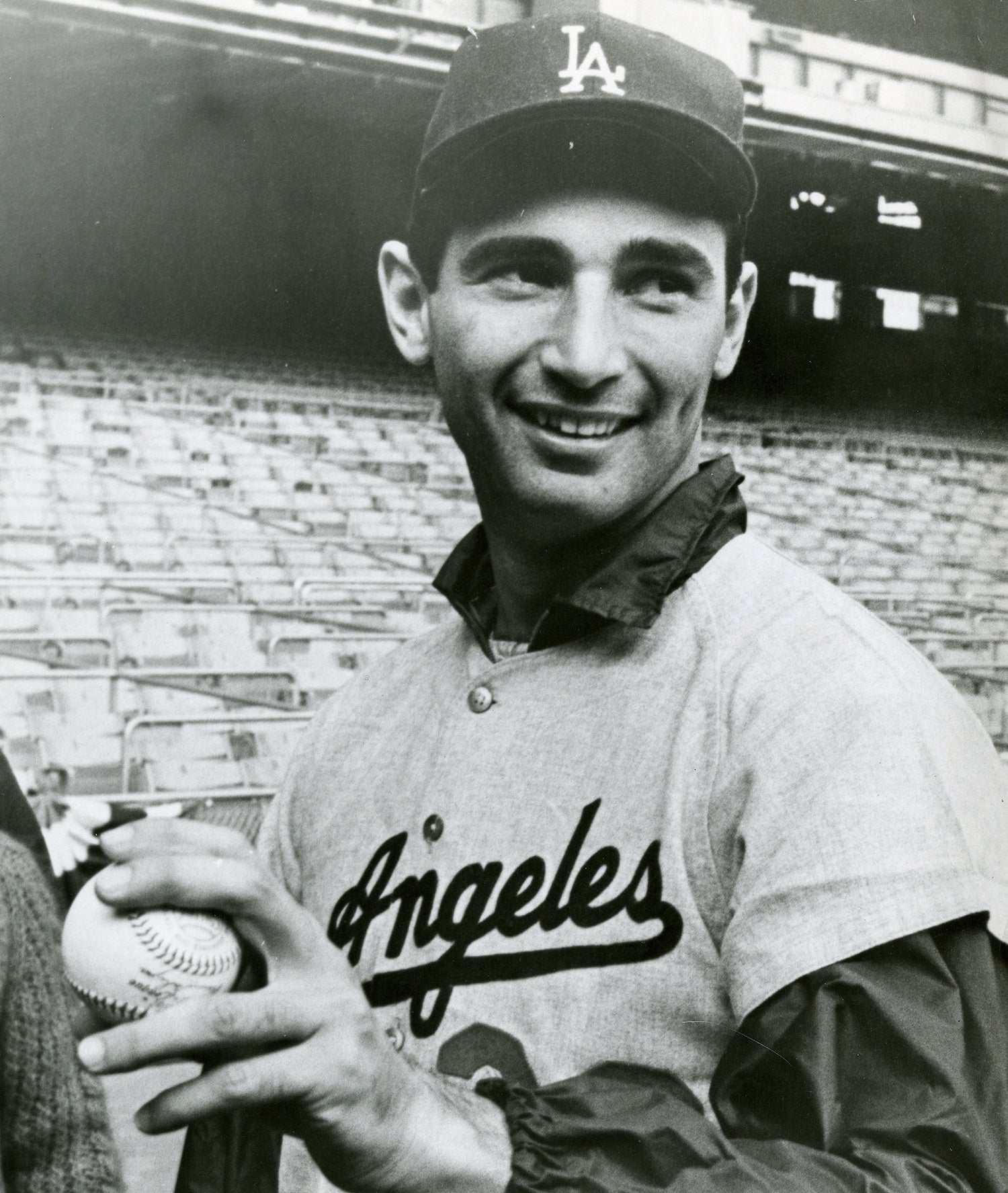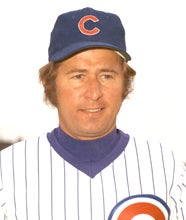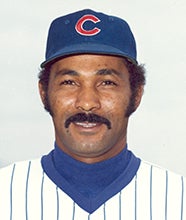- Home
- Our Stories
- One Night in September
One Night in September
Ticket, scorecard from Koufax’s perfect game donated to the Hall
Major League Baseball has staged more than 200,000 games since the National League’s inception in 1876, and one would be hard pressed to find a better display of pitching in all of those contests than the night of Sept. 9, 1965 in Los Angeles.
Now, 50 years later, one lucky baseball fan who watched Sandy Koufax throw a perfect game and the fourth no-hitter of his career is helping the Hall of Fame commemorate the performance with a pair of donations. William Childers, of El Dorado Hills, Calif., has generously donated his children’s ticket (admission price: just 75 cents) and a Dodgers scorecard that he filled out that night at the age of 10.
To appreciate the magnificent pitching that night, start with the future Hall of Famer Koufax, who before this game had already won a National League Cy Young Award, a league MVP and a World Series MVP – and came very close to repeating all three of these feats again in 1965. The southpaw struck out 14 batters (tied with Matt Cain for most ever in a perfect game) from a Cubs lineup that featured three fellow Hall of Famers: Ernie Banks, Ron Santo and Billy Williams. Several Chicago players admitted that a hitch in Koufax's delivery telegraphed whether he was going to throw his fastball or curve ball. But on this night - like many other nights for Koufax's opponents - the inside information didn't seem to help.
"We knew what was coming," said Williams of Koufax's pitches, "and we still couldn't hit it."
On top of that, consider the performance put on by Koufax’s opponent that night, Bob Hendley. He allowed just one hit, which did not result in a run, and matched Koufax’s no-hitter through the game’s first seven innings. Dodgers leftfielder Lou Johnson scored the only run, unearned, when he walked, advanced to second on a bunt, stole third base and came home on a wild throw by Cubs catcher Chris Krug.
Blessed with nearly untouchable arms that night, Koufax and Hendley combined for two incredible records: fewest combined baserunners (two) and fewest combined hits allowed (one).
The cover of the official 1965 Los Angeles Dodgers score card that William Childers filled out at age 10 during Sandy Koufax's perfect game on Sept. 9, 1965. Childers recently donated this score card, along with his ticket, to the Hall of Fame. BL-574-2015 (Milo Stewart, Jr. / National Baseball Hall of Fame)
View from the crowd
Keeping track of all the scoring – or rather, lack thereof – was the 10-year old Childers in the upper deck of Dodger Stadium’s first base line. Childers’ parents had recently separated, and he’d relocated with his mom and three brothers from Missouri to southern California.
His new coaches from the Muscoy Little League Comets team offered to take him to a Dodgers game.
“From the eyes of a 10-year old boy I was in awe of the beauty of Dodger Stadium – the green grass, the big crowd and the smells of the ball park,” Childers recalled. “I remember one of my coaches bought me a program, a Dodger dog and a Coke. How could the night get any better than that?”
Incredibly, it was just the second major league game Childers had ever attended and he was just beginning to familiarize himself with the players on the field. As innings passed, Childers followed along in an official Dodgers score card, denoting the rapidly escalating outs with simple notations like “SO” (strikeout), “FO” (fly out) and “GO” (groundout).
“As the game progressed, I remember my coaches started talking about a no-hitter,” he said. “I remember the whole stadium seemed to be getting louder after every out that the Cubs made.
“When the final out was made in the top of the ninth inning the crowd went crazy,” Childers added. “I remember one of my coaches telling me that I needed to hang on to my program and ticket stub because it might be worth a lot of money someday.”
To Cooperstown, 50 Years Later
After witnessing the type of history that many California fans would give up anything to have seen, Childers was hooked as a Dodgers fan. He held on to his program and his ticket – just like his coaches advised – for the last five decades. The mementos have survived the lifespans of two sons and six grandchildren, and Childers added, “I am truly amazed that one of them didn’t make a coloring book out of (the scorecard).”
Though he has since changed his allegiances to the rival San Francisco Giants, the souvenirs from Koufax’s magic night remained a dear possession to Childers. Then, a recent visit to the Hall of Fame by his brother Ed inspired him to ensure they would remain preserved forever.
“He sent me a picture of a baseball on display from the perfect game,” Childers said, “and that is what got me to thinking about donating it to the Hall of Fame. I never would have sold it, and I felt it was better to be stored and cared for in a Museum and shared with others rather than collecting dust in one of my drawers.
“I also thought, ‘How cool would that be if they accepted it?’”
Both the program and ticket stub were accepted last week into the Hall of Fame’s collection, which features more than 40,000 three-dimensional artifacts and three million paper documents. Through his donation, Childers has made sure that his souvenirs from the stands will be housed alongside other artifacts from the field – including a game-used glove and ball from Koufax and the mitt worn by Dodgers catcher Jeff Torborg – that tell the story of that incredible night in Chavez Ravine.
“I am truly honored to have my donation accepted by the National Baseball Hall of Fame and Museum,” he said. “I am glad it will be preserved for generations to come.”
The glove worn by Dodgers catcher Jeff Toborg when he received Sandy Koufax's perfect game against the Cubs on Sept. 9, 1965. Torborg would also use this glove to catch the first of Nolan Ryan's seven no-hitters in 1973. B-245-73 (Milo Stewart, Jr. / National Baseball Hall of Fame)
Matt Kelly is the communications specialist at the National Baseball Hall of Fame and Museum

